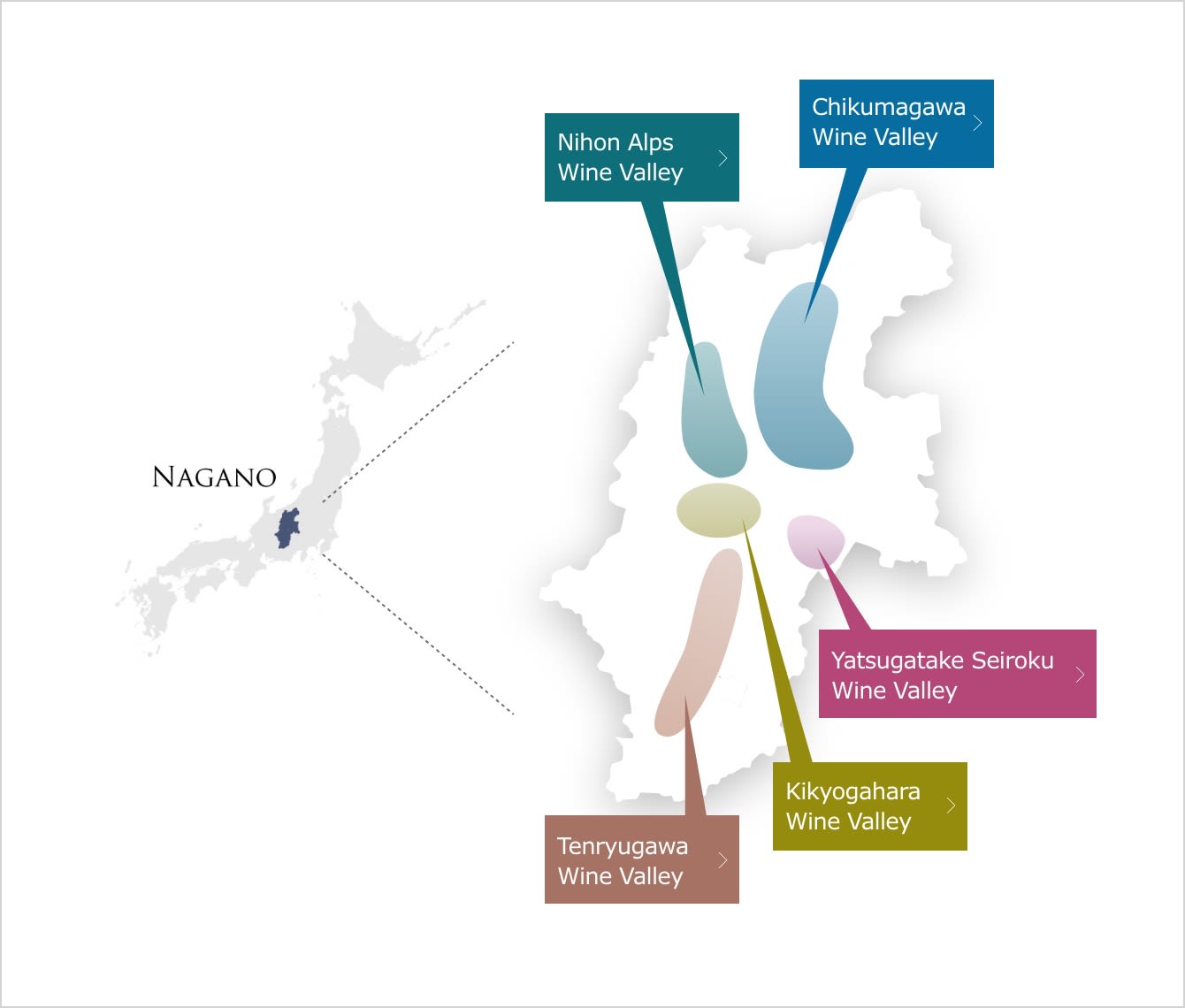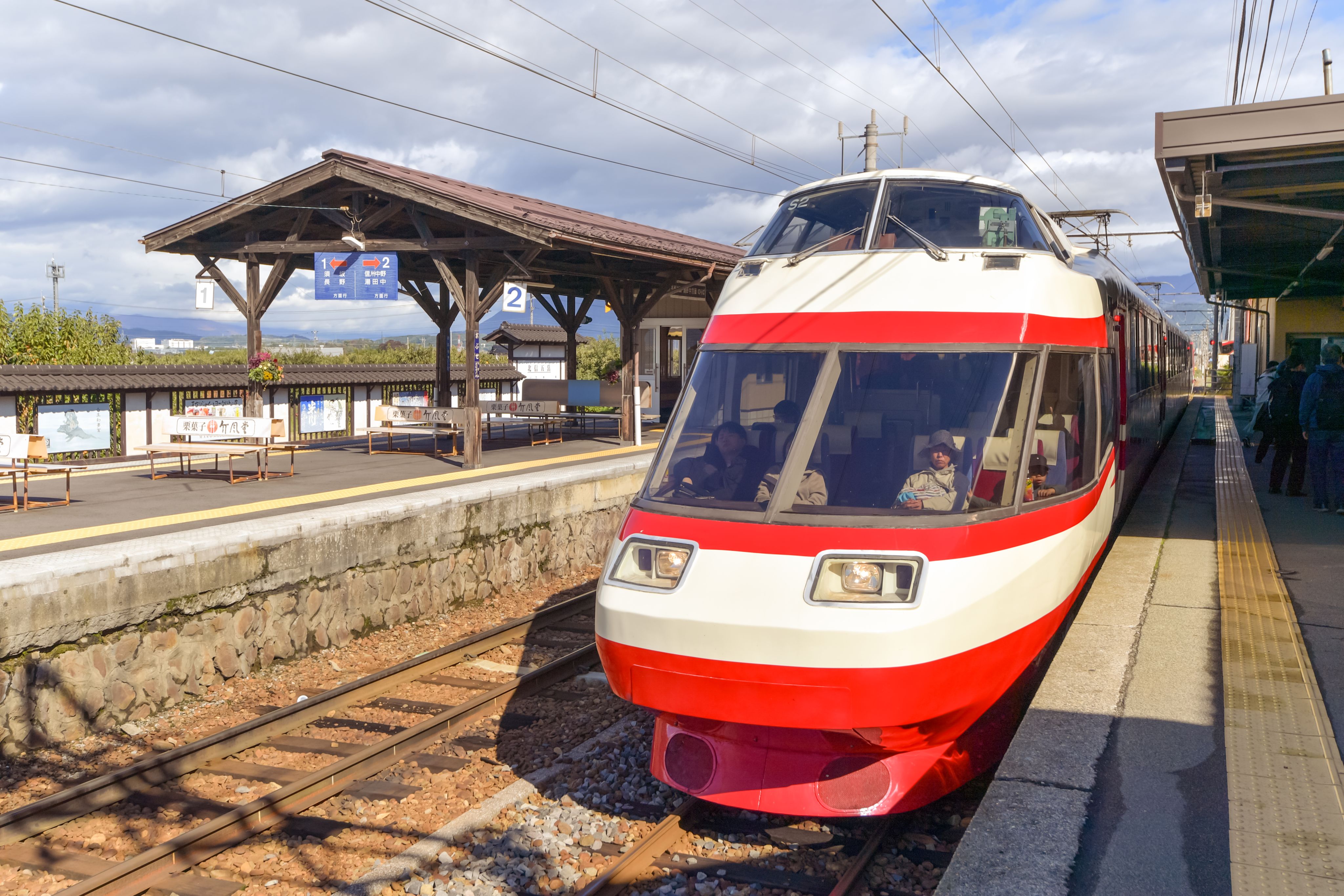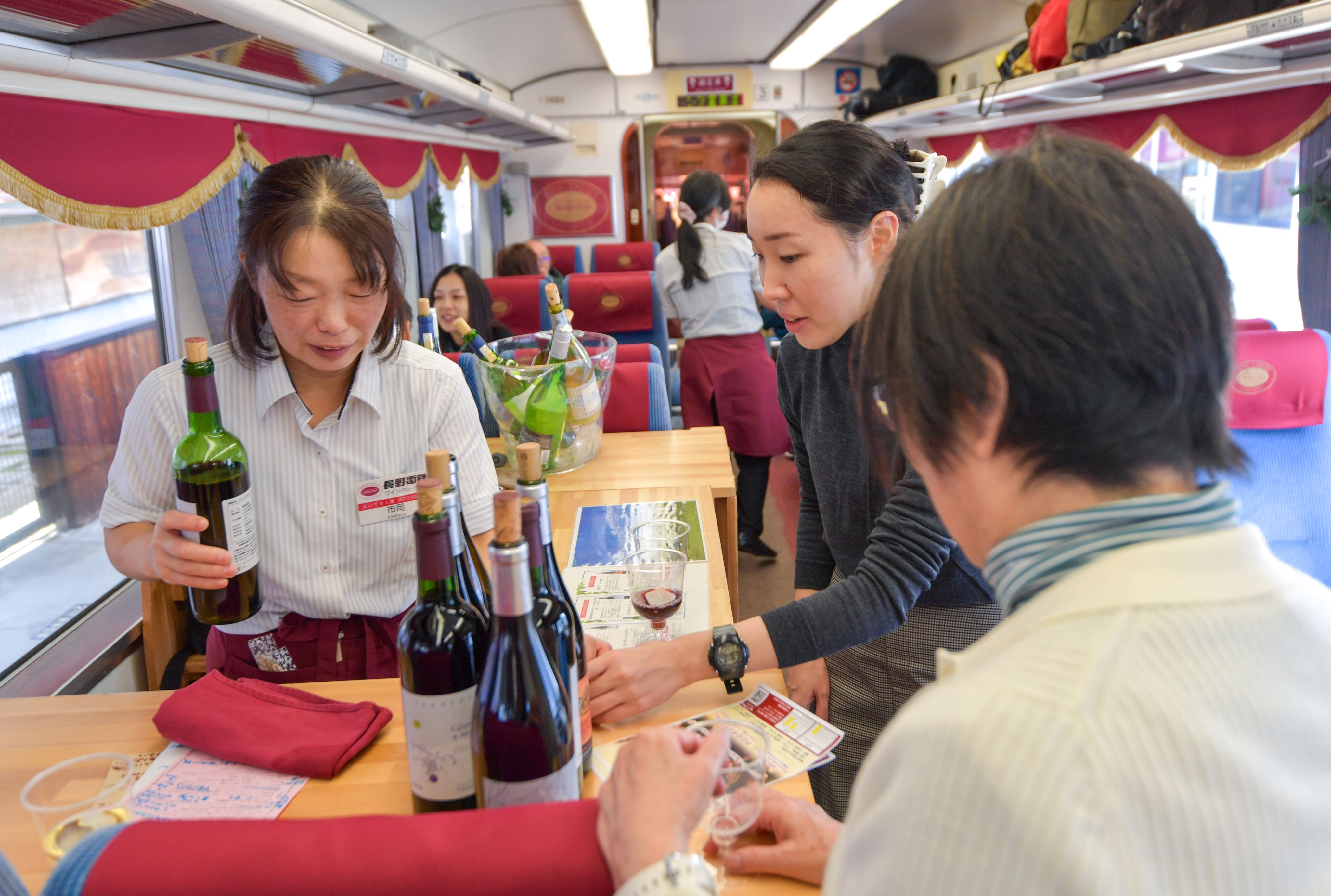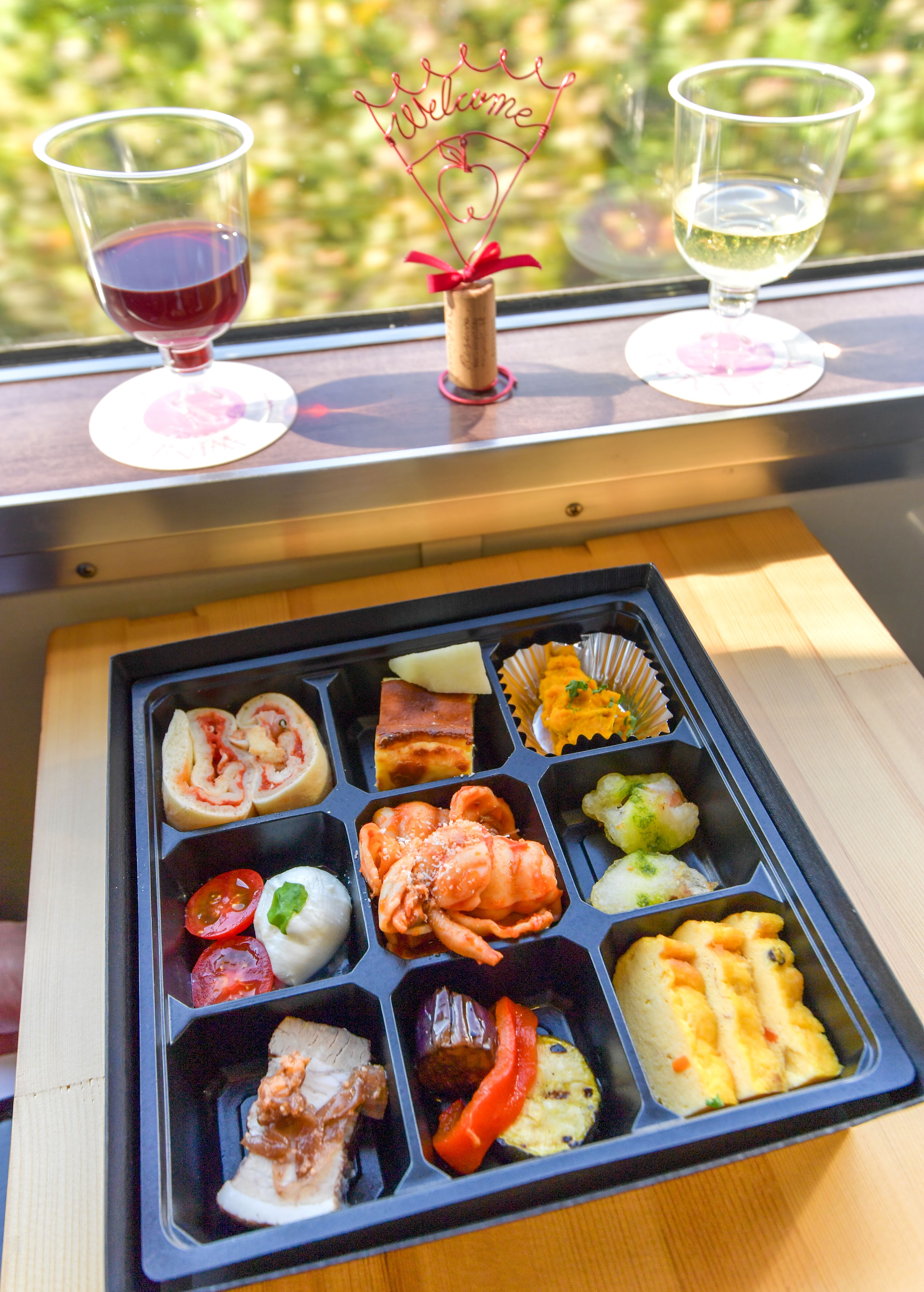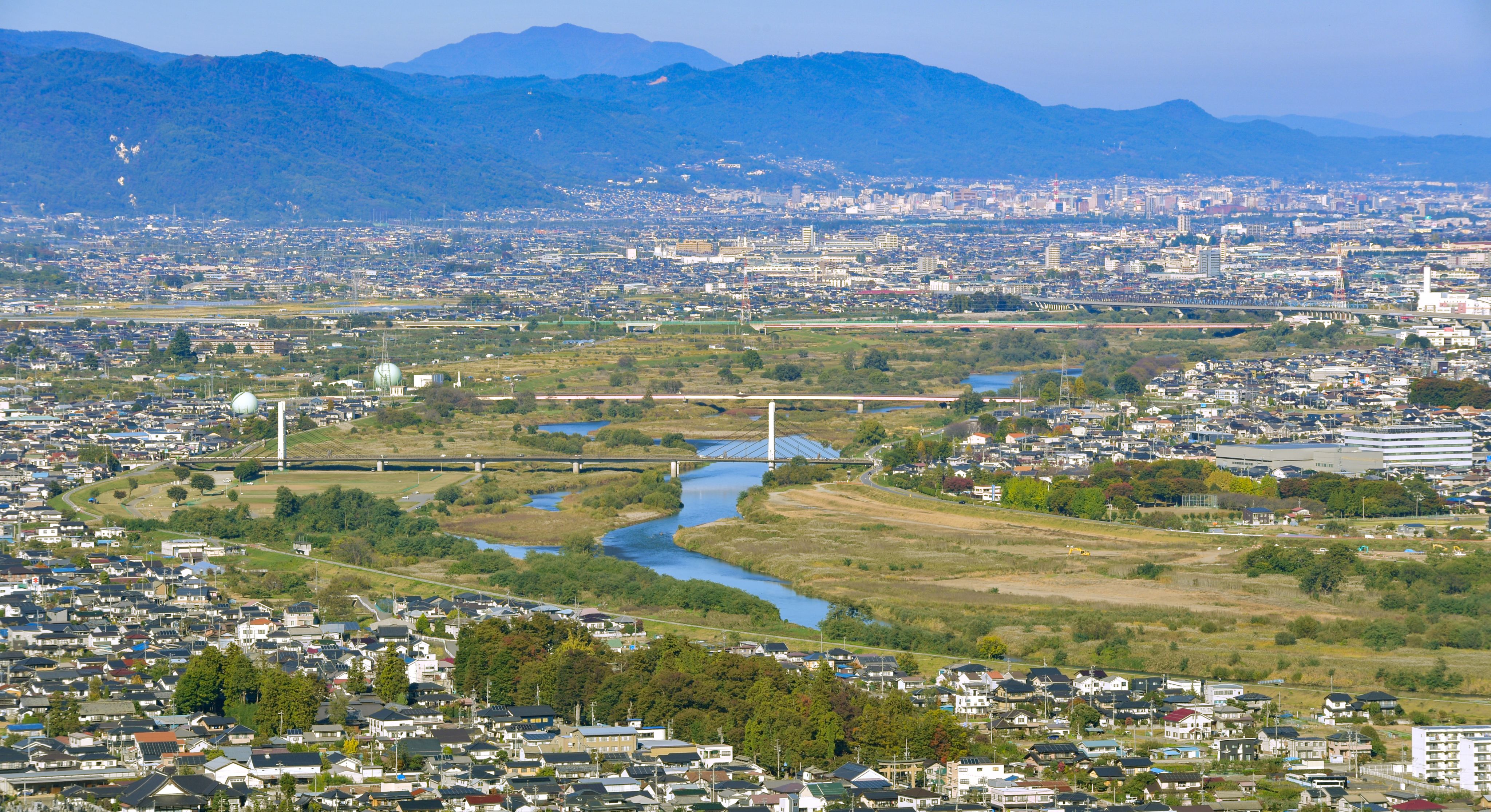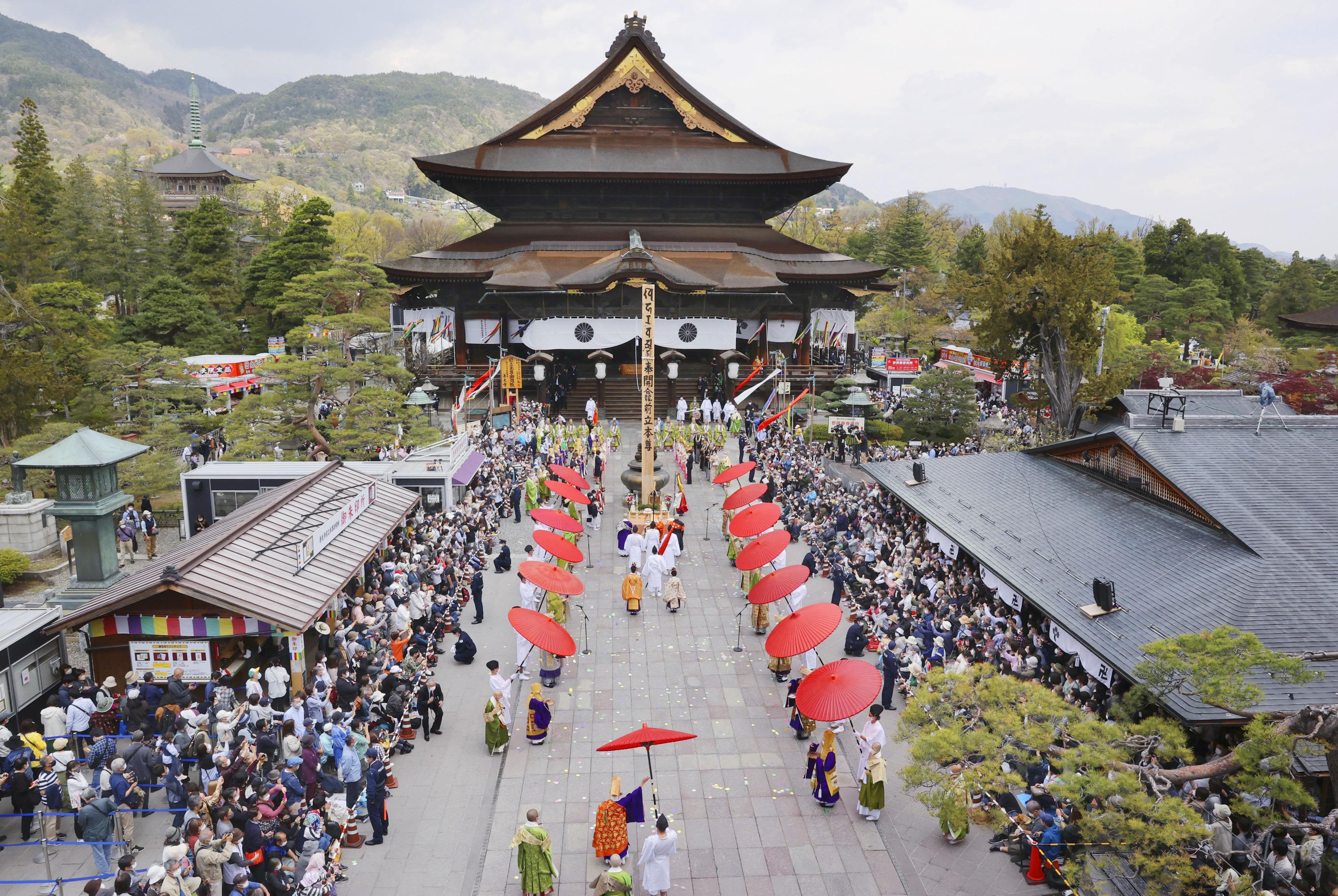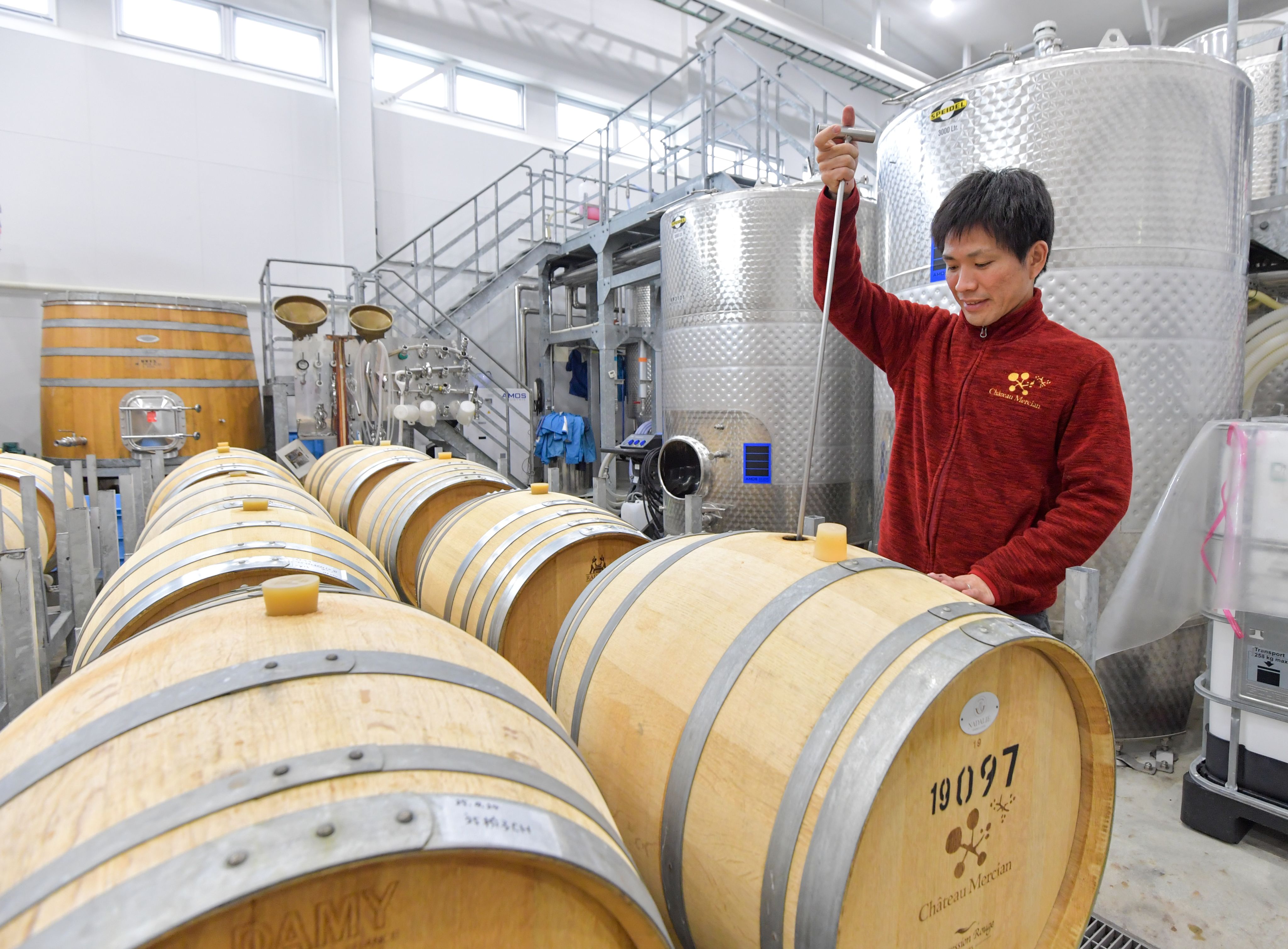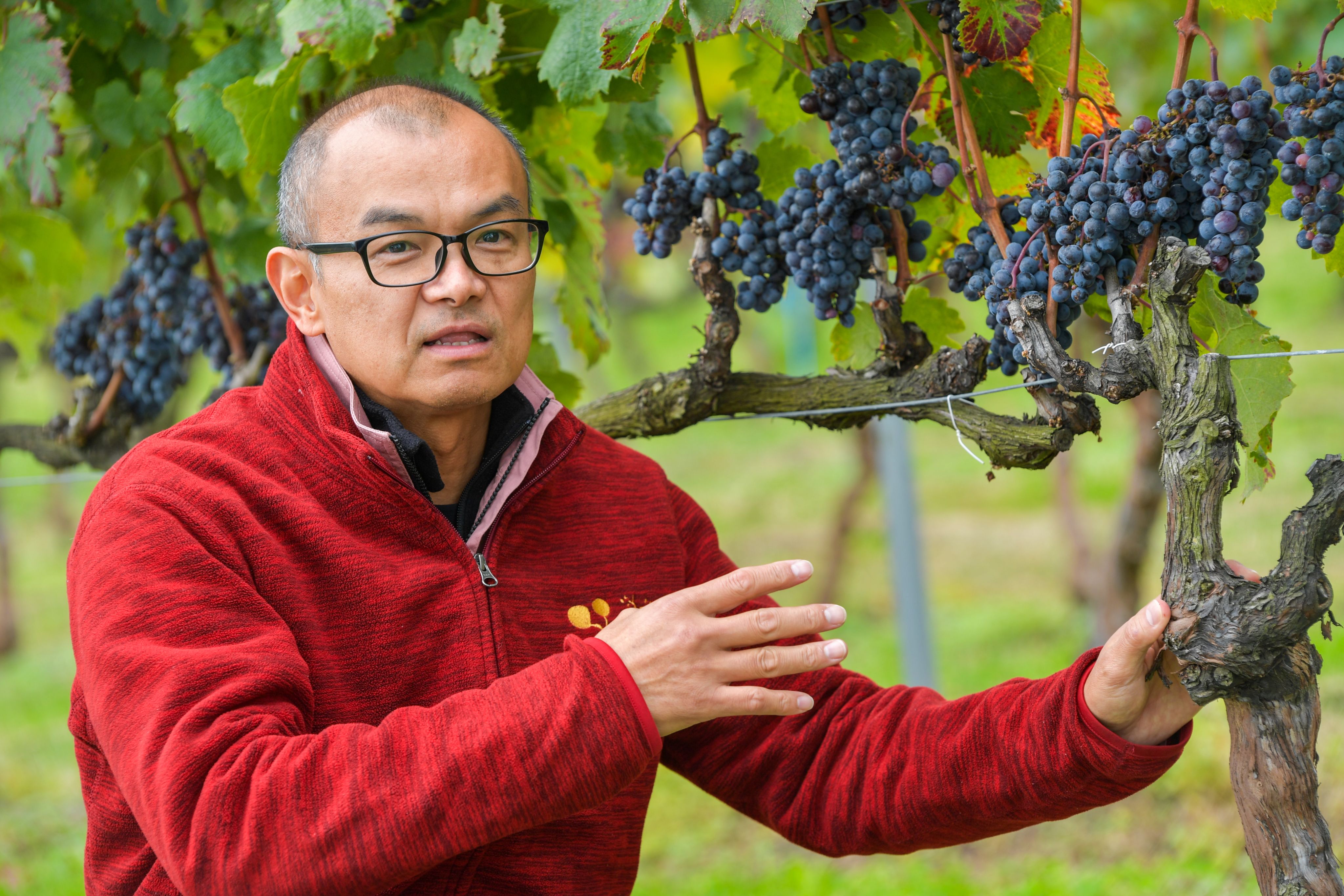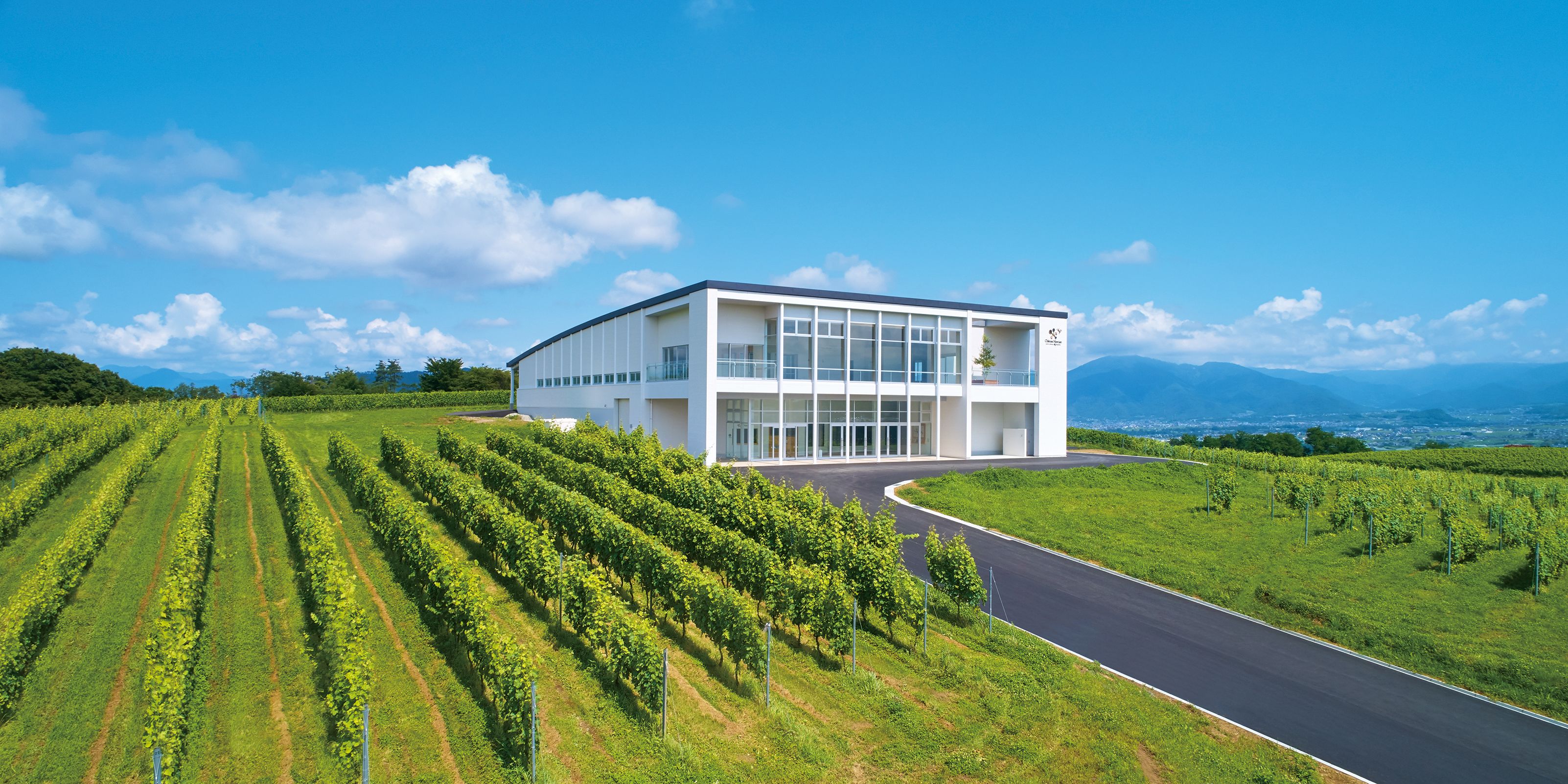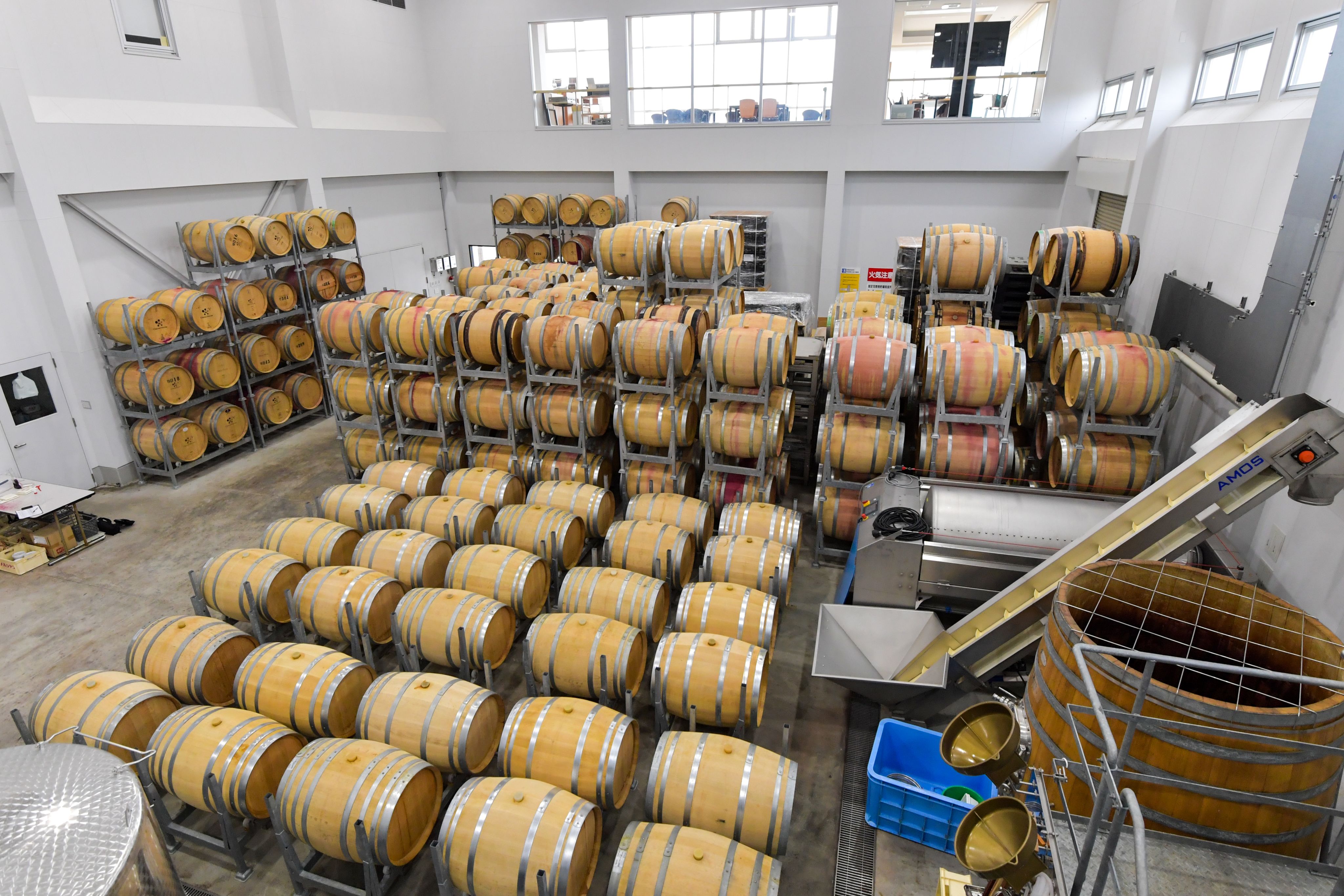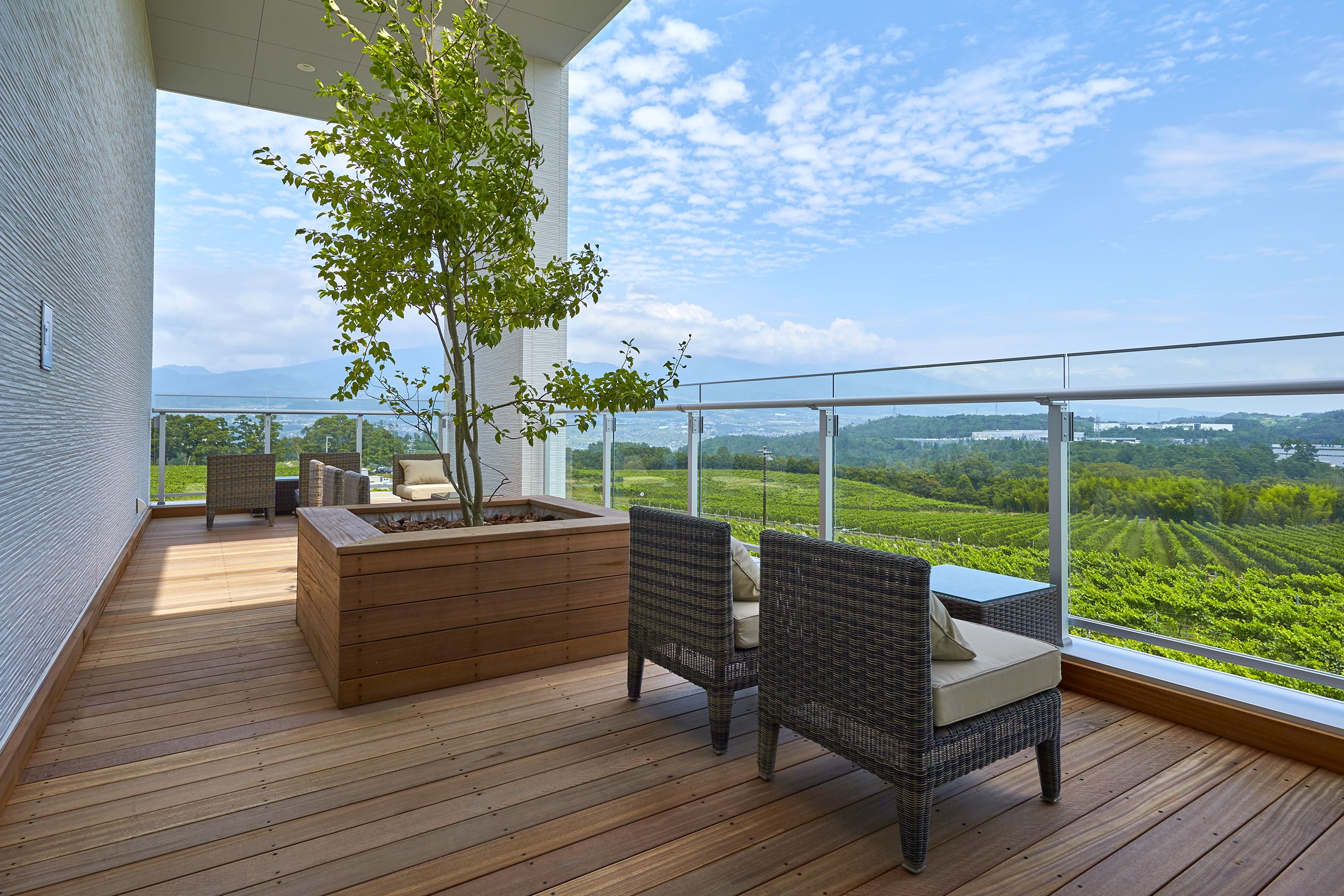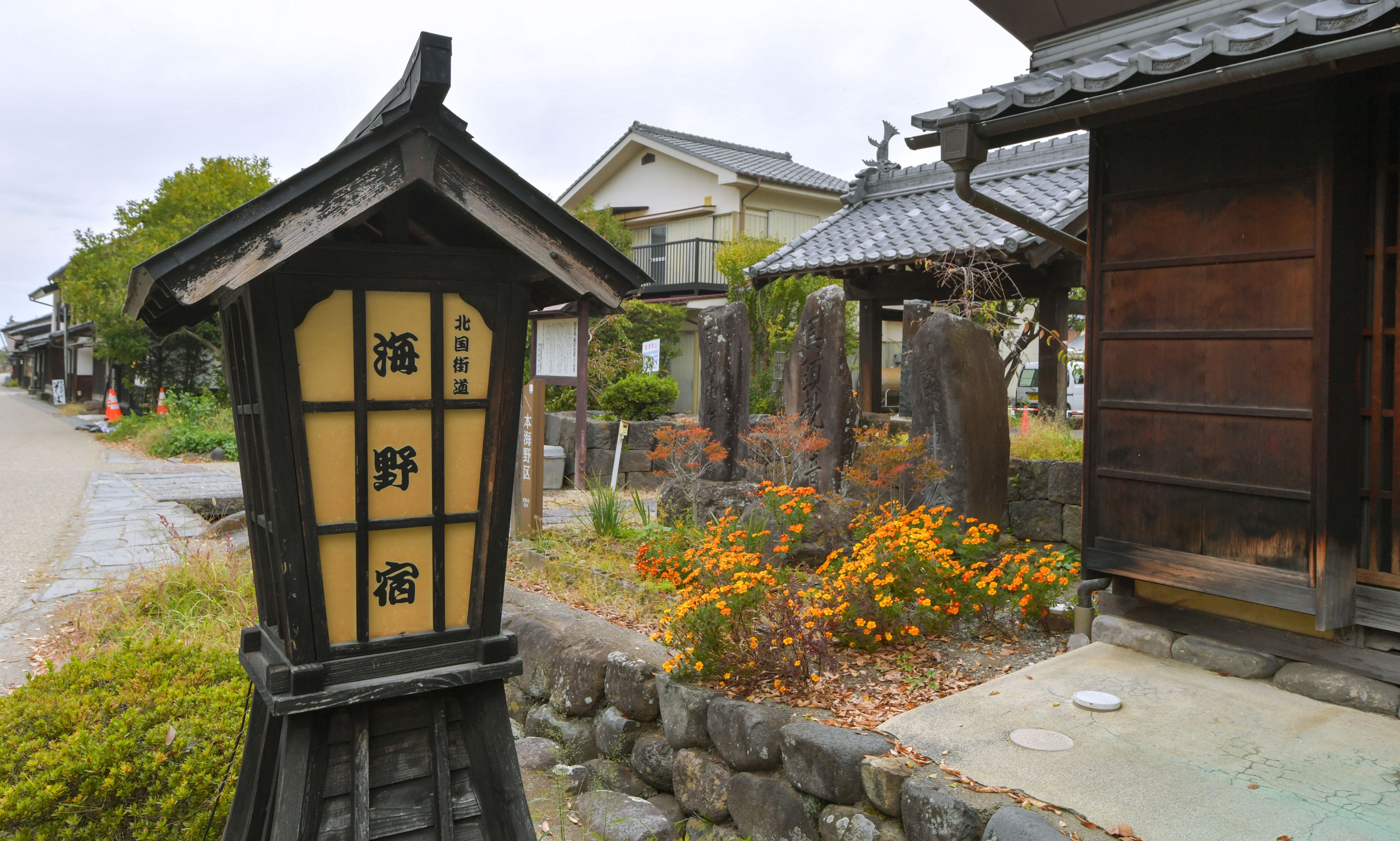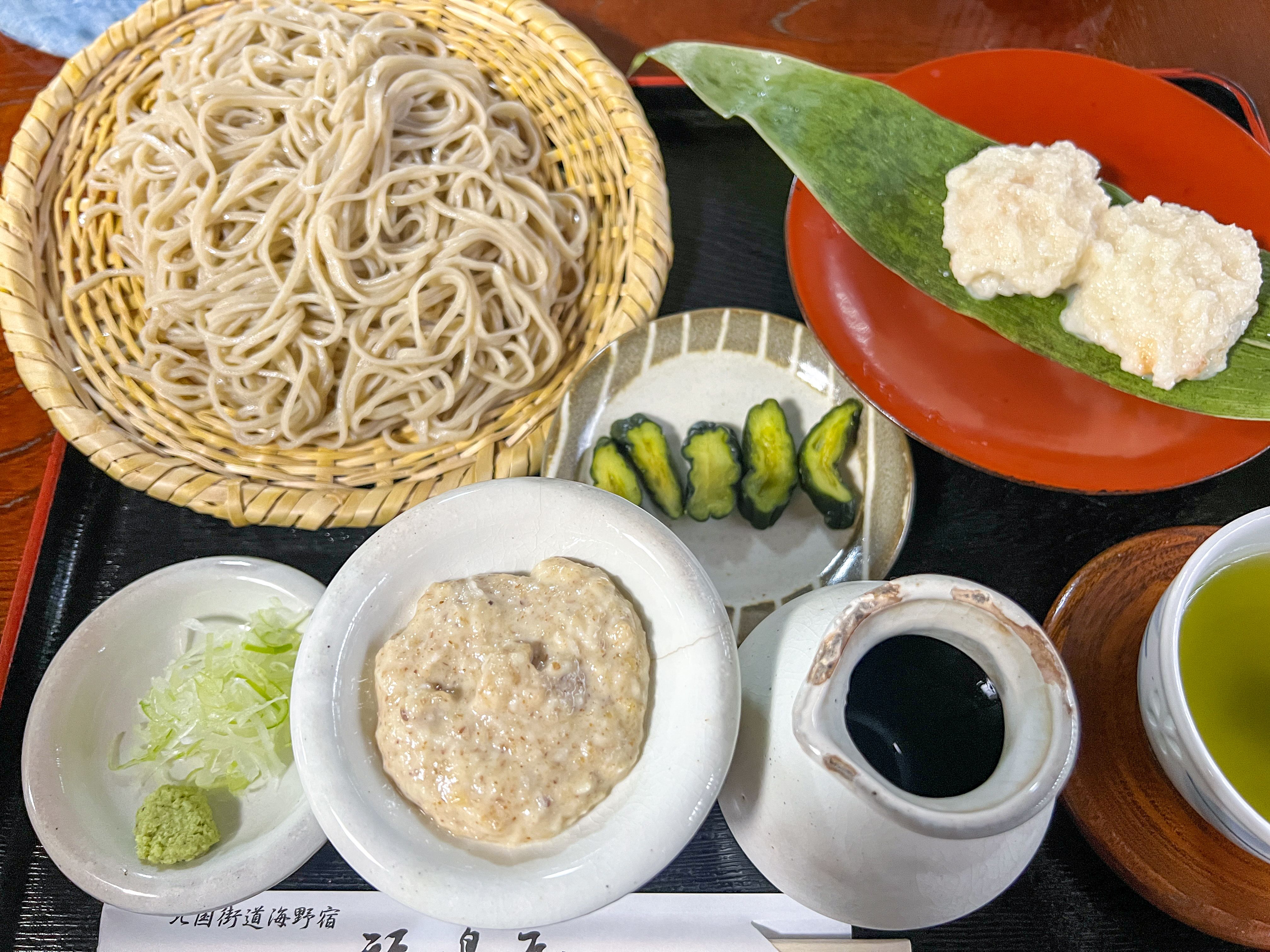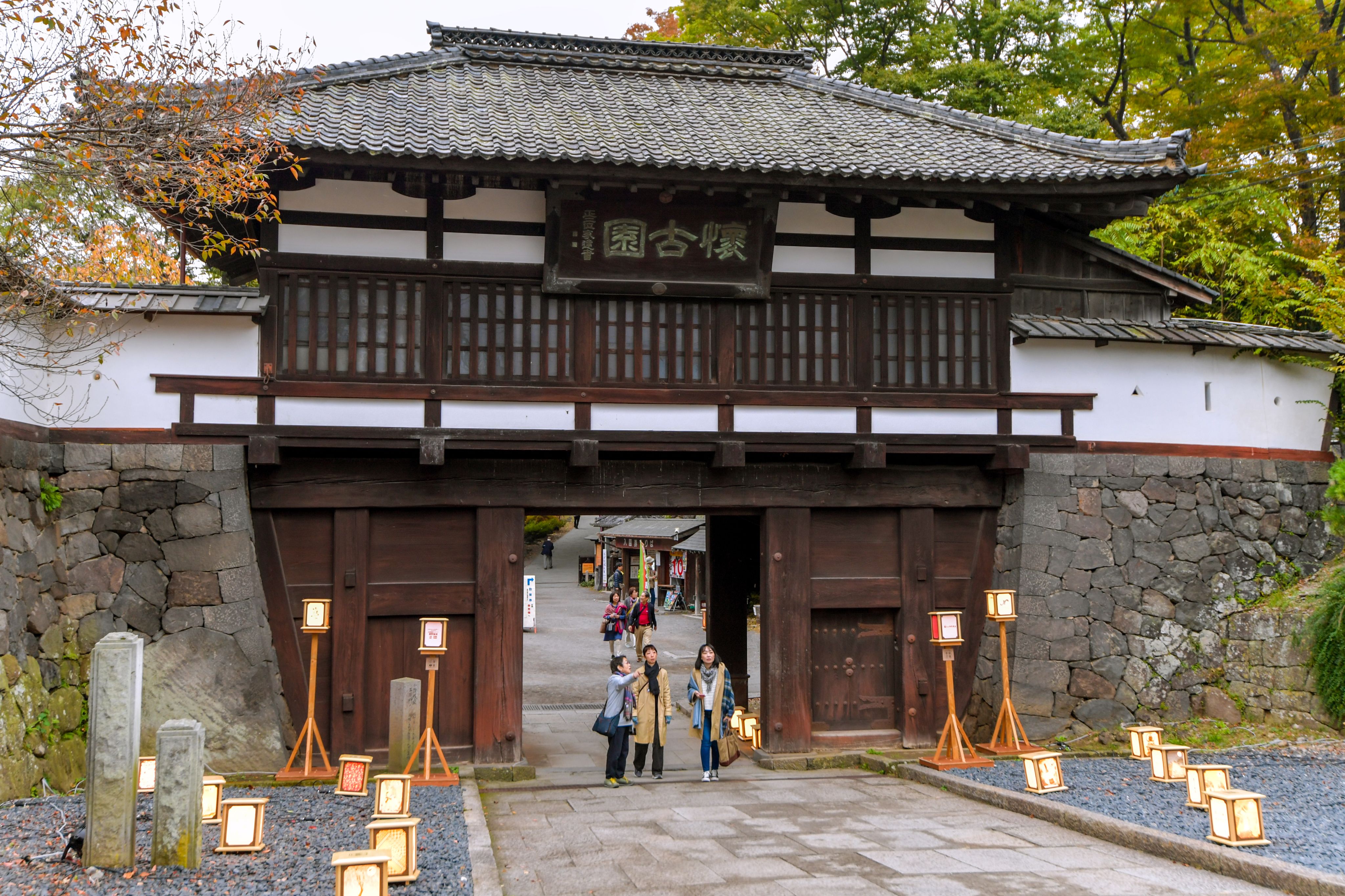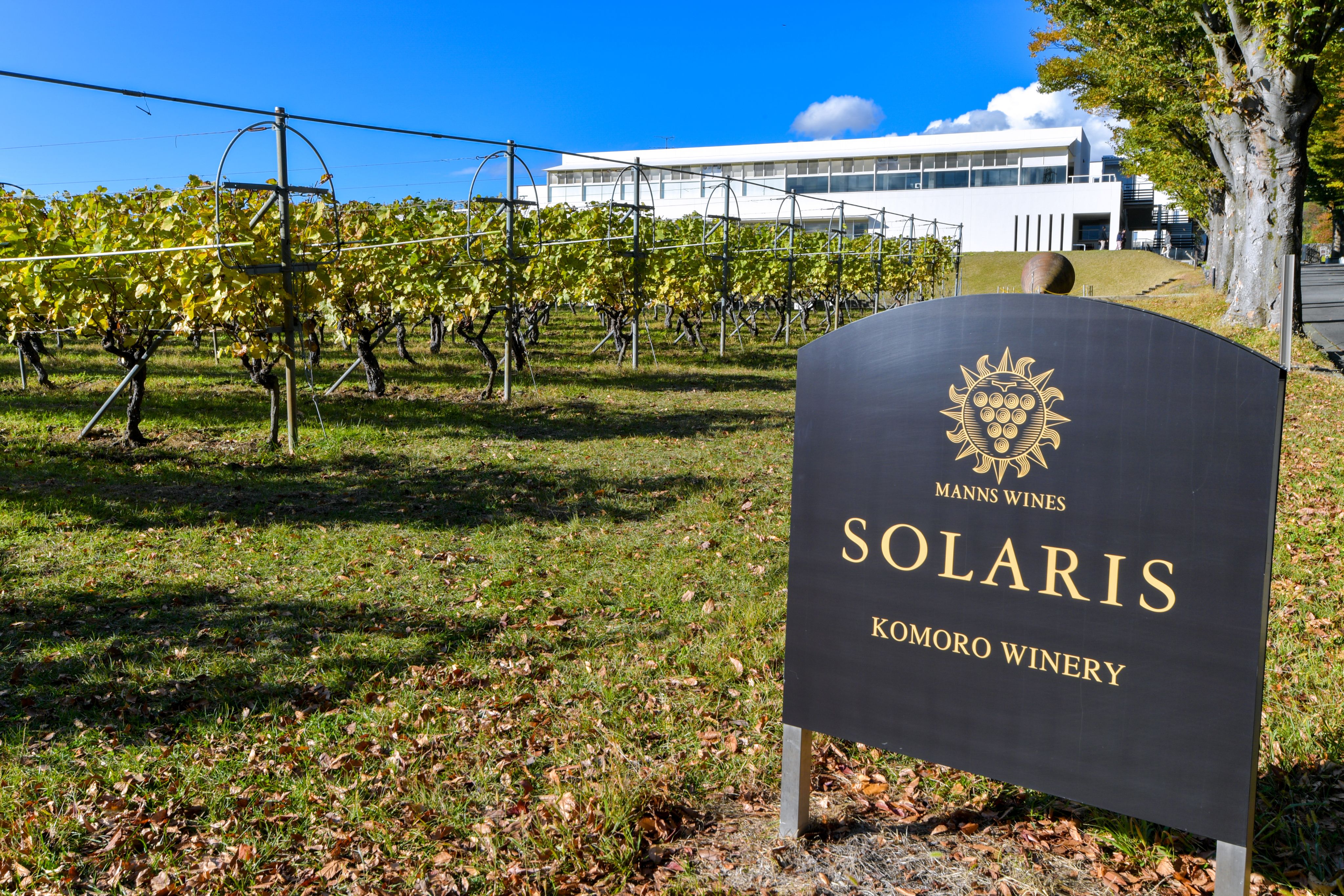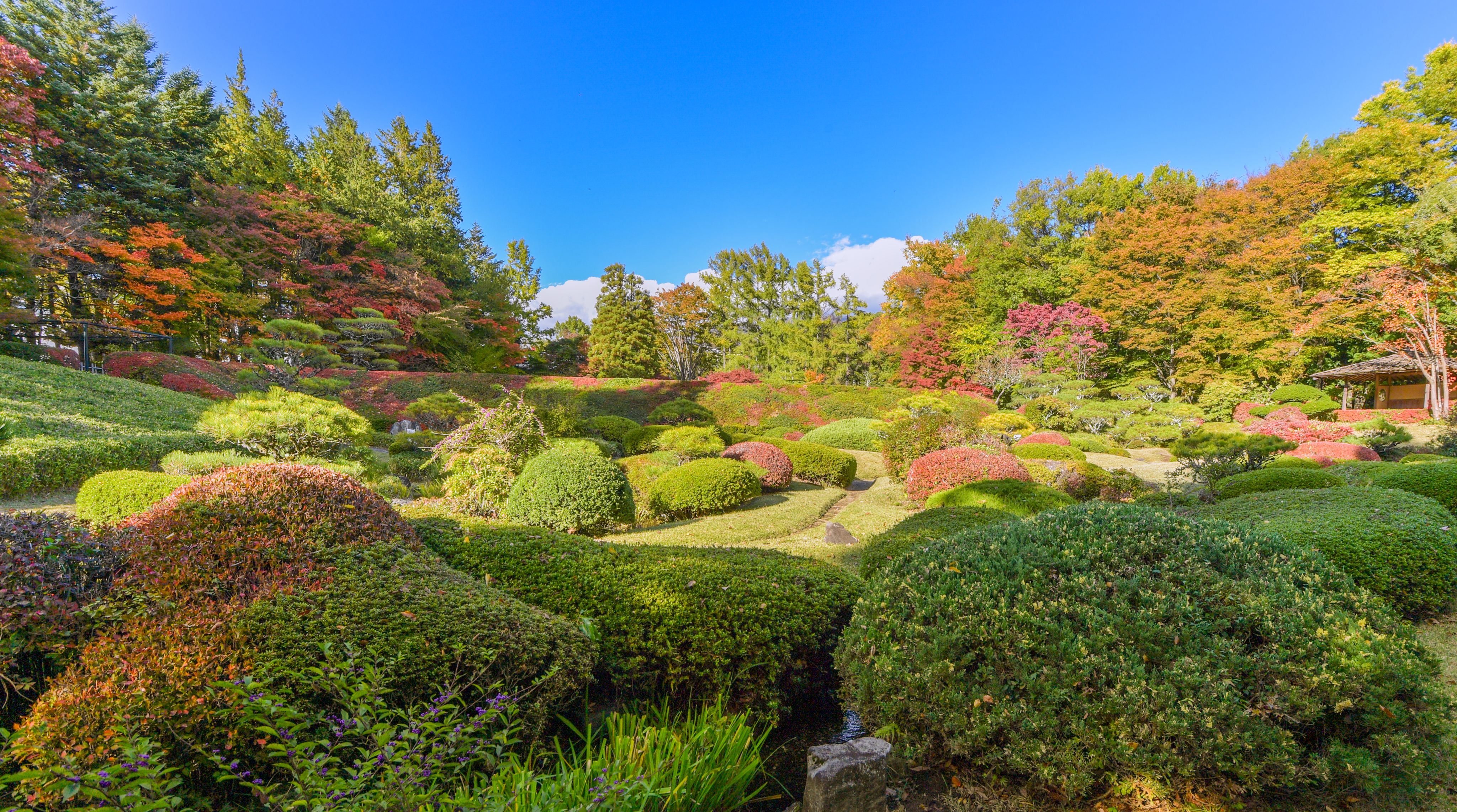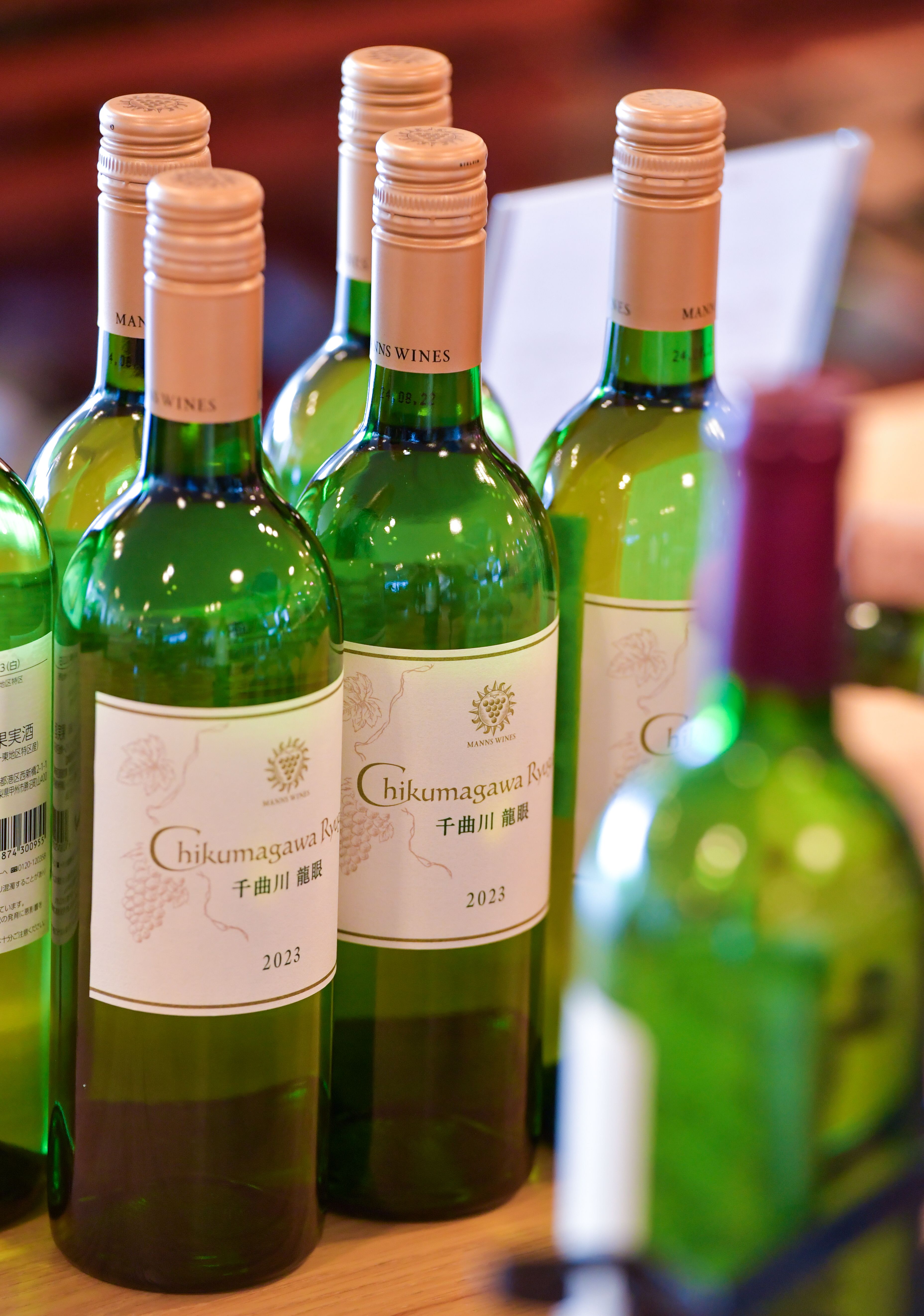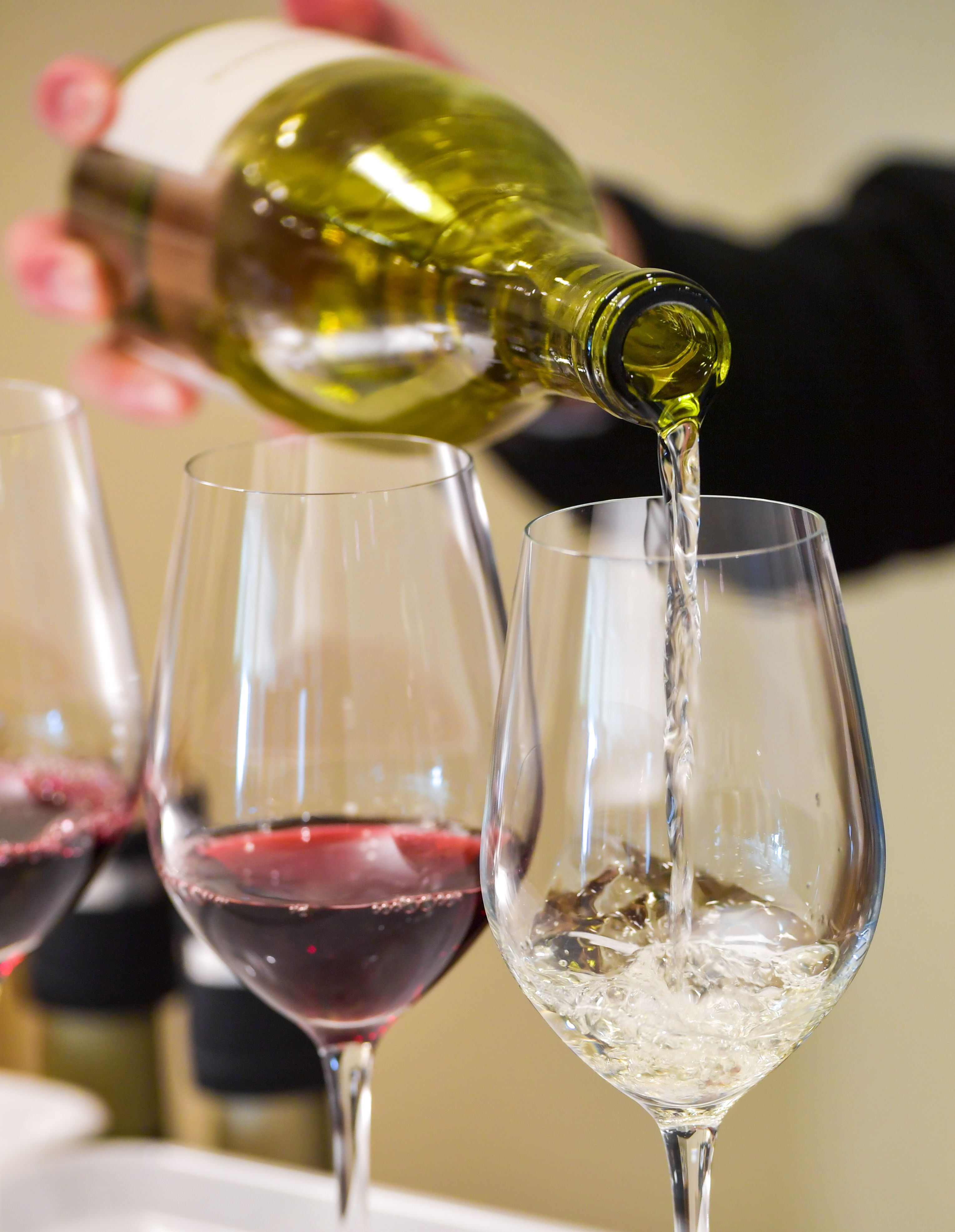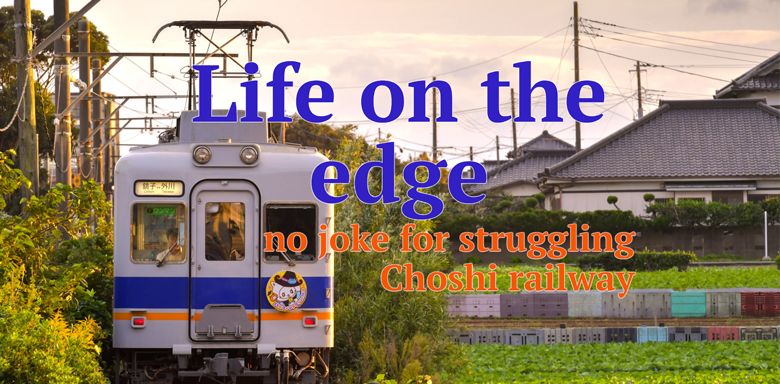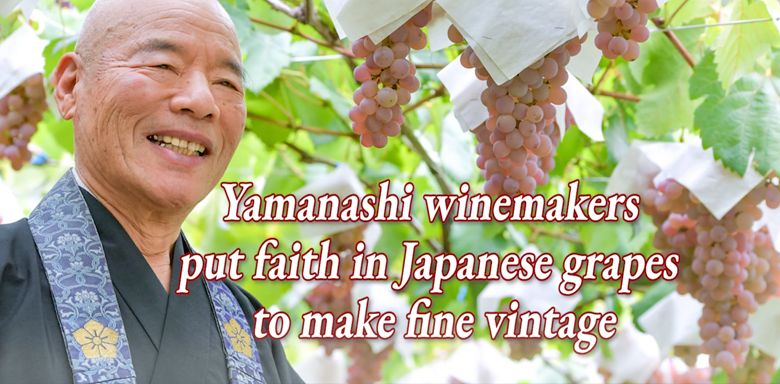Nagano wine valley channels pioneering spirit to attract visitors
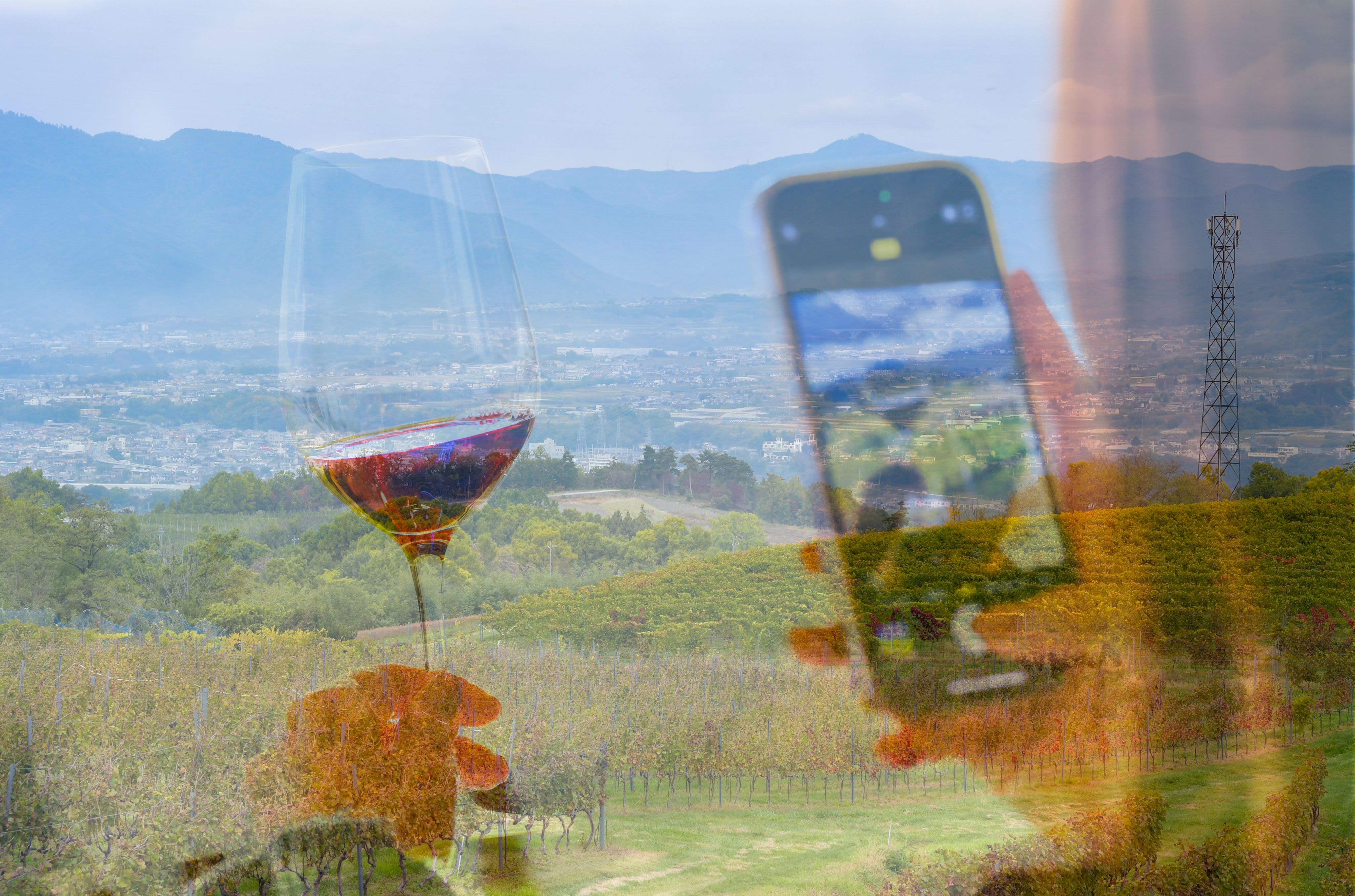
In the Chikumagawa Wine Valley, the up-and-coming region of Nagano wine, winemakers are channeling a pioneering spirit to reveal the region’s potential and draw visitors in deeper.
©Nagano Prefecture
©Nagano Prefecture
On weekends and holidays, two carriages of the Limited Express Yukemuri train, traveling between Yudanaka and Nagano stations, are reserved for the Kitashinano Wine Valley Train.


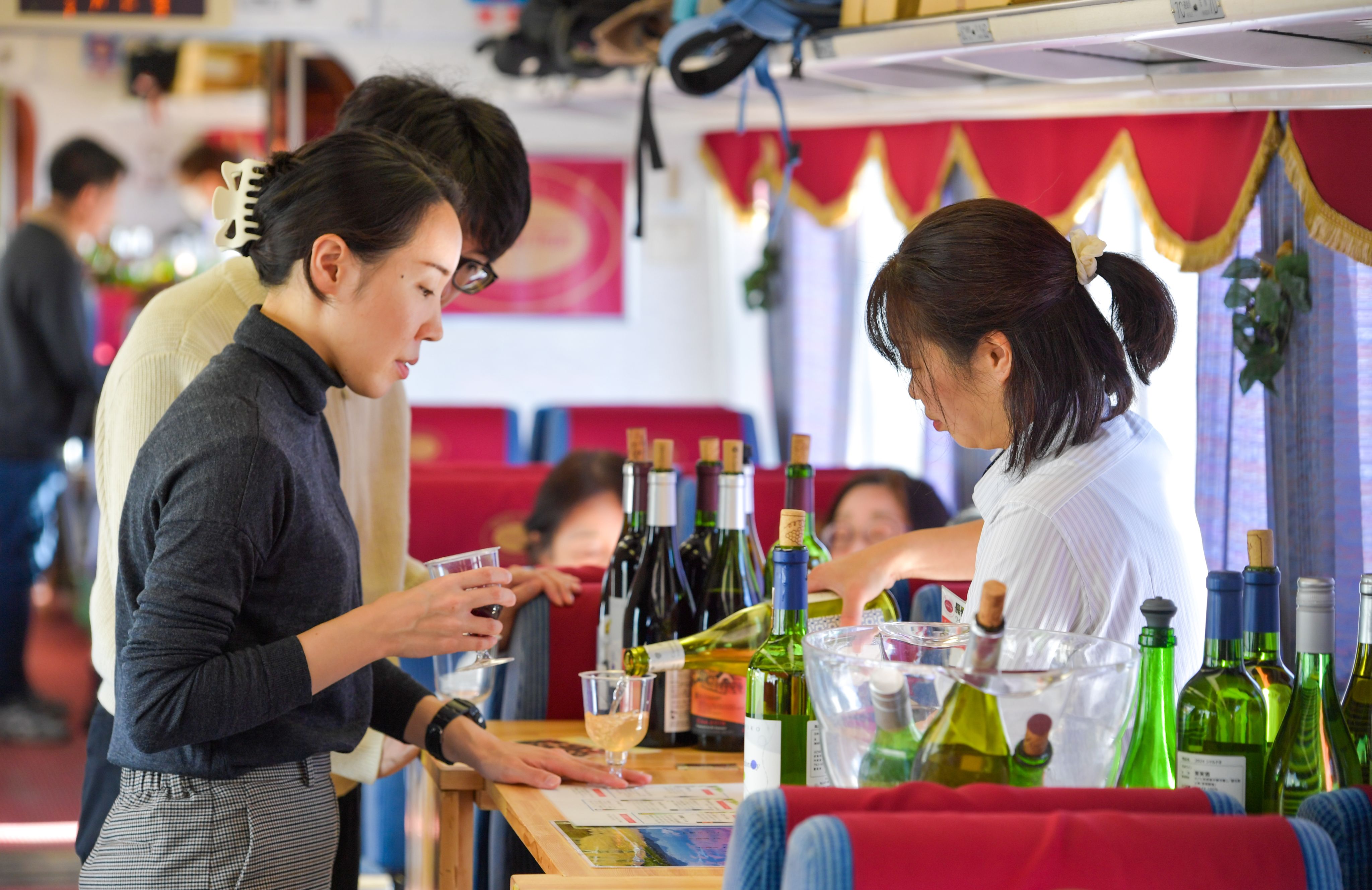
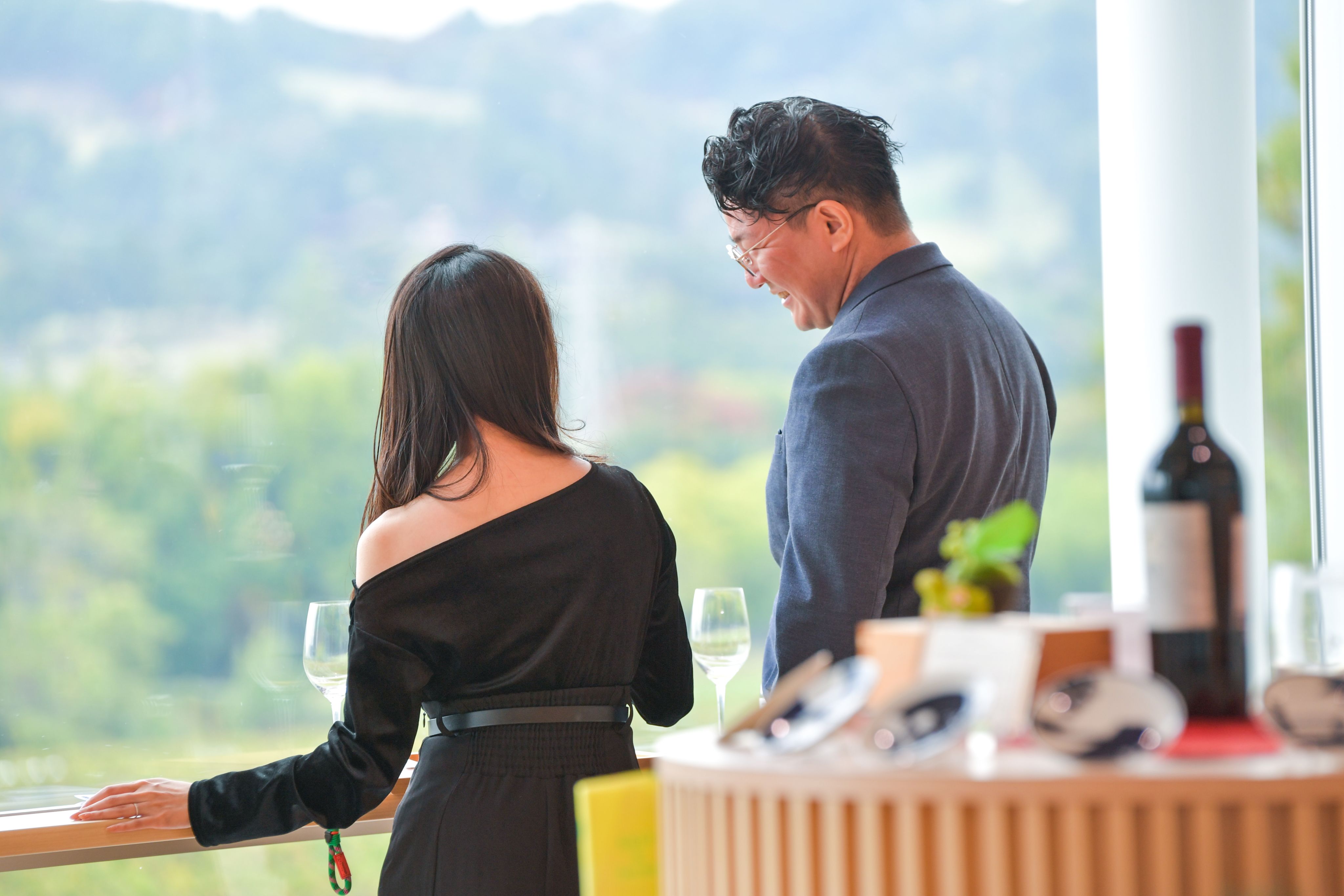
The service, operated by Nagano Electric Railway, takes a relaxed pace through wine country stretching northeast from the city of Nagano, what is the northern end of the greater Chikumagawa (Chikuma River) Wine Valley. On board, passengers get an easy introduction to Nagano wine, enjoying a tipple or more from wineries based near the route.
Nagano Prefecture, in central Japan, is the third largest producer of Japanese wine, according to a 2024 National Tax Agency survey. The prefecture is home to five main winemaking regions. Among these so-called wine valleys, Chikumagawa Wine Valley is the largest by area and number of wineries.
On a wine valley train departing Yudanaka in early November, passengers choose from the selection of wines at a counter in the middle of the carriage, taking care to keep glasses steady as they return to their seats on the moving train.
Nearing the end of the around 80-minute journey, the driver brings the train to a halt near the Chikuma River for a photo opportunity, or time for another glass of wine before train and passengers roll into Nagano.
The service is an easy way to start a journey through the Chikumagawa Wine Valley, but it could just as easily be the end. Deeper in the valley, winemakers have a fight on their hands to attract visitors, who already have plenty of distractions in the region.
Near the northern end of the valley, Yudanaka offers access to the onsen-bathing snow monkeys at Jigokudani Yaen-Koen and around the city of Nagano, attractions include Zenkoji temple. Approaching from the south, many visitors from Tokyo may only get as far as the shopping and resorts of chic Karuizawa.
But there is an air of optimism and pioneering spirit among the winemakers who feel they are only now discovering their region’s potential.
Chateau Mercian Mariko Winery is in the valley’s central region around Ueda. The winery is one of the area’s pioneers, planting grapes here as Mariko Vineyard in 2003.
“There’s still a lot that is unknown to us. We’re beginning to figure out what kind of region this can become and how to shape it,” Yasuaki Katsuno, Chateau Mercian’s chief winemaker, told Japan Wire in October.
Katsuno, 52, says the vineyards at Mariko Winery have by now settled into a steady rhythm on land once planted with mulberry for silk production before being left to neglect.
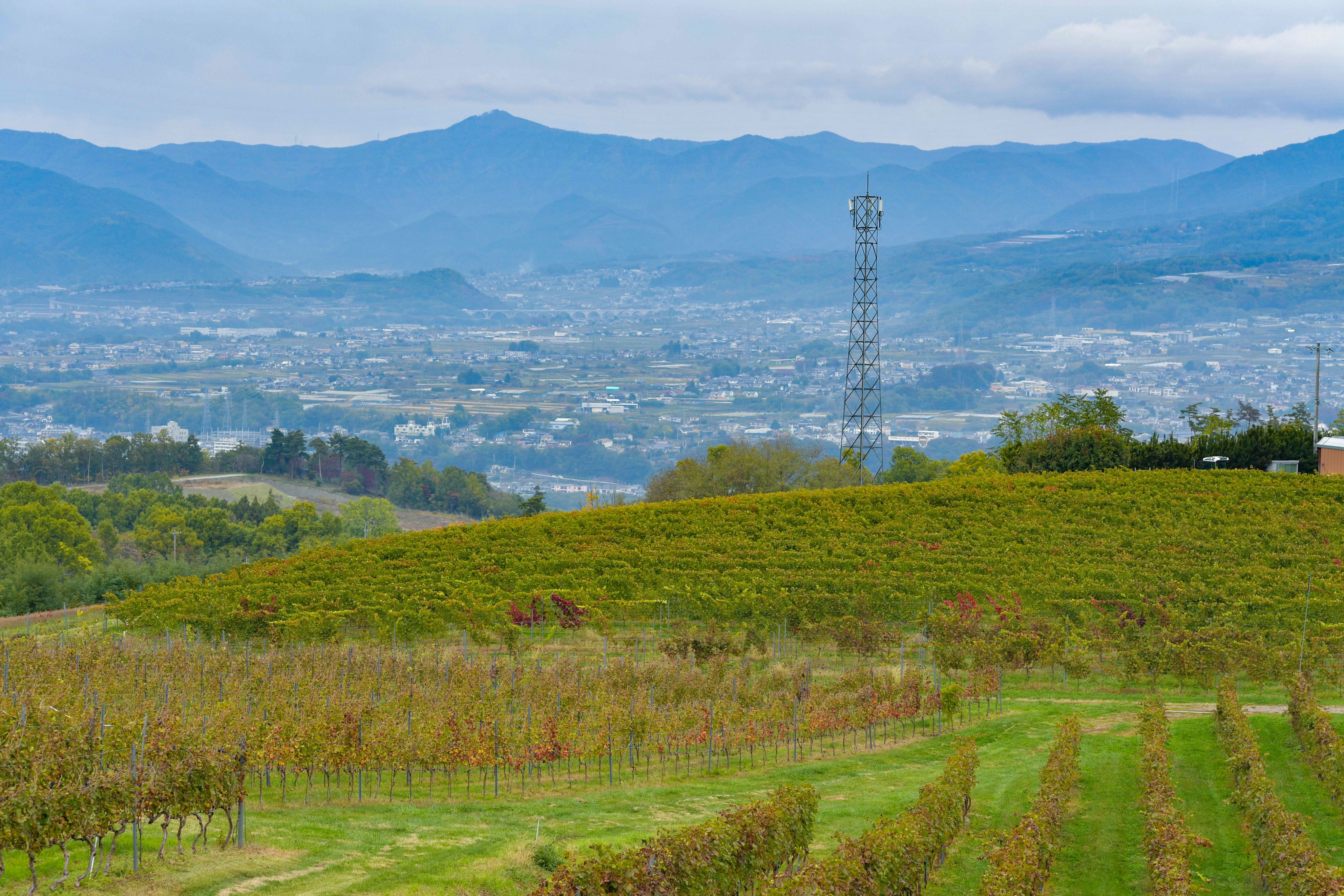
Grape varieties, including Merlot, Chardonnay, Syrah and Sauvignon Blanc, are grown in pursuit of wines that display a finesse and elegance inspired by the balance of a Japanese garden.
©️Chateau Mercian Mariko Winery
©️Chateau Mercian Mariko Winery
The all-encompassing Omnis -- a full-bodied red made from a combination of grapes -- is the best expression of Mariko Winery’s approach to winemaking.
“The grape varieties may be the same as those used overseas, but we want to people to understand that this is Japanese wine, produced in Japan, using grapes grown in Japan,” Katsuno said. “We are trying to bring people closer to this understanding of the wine.”
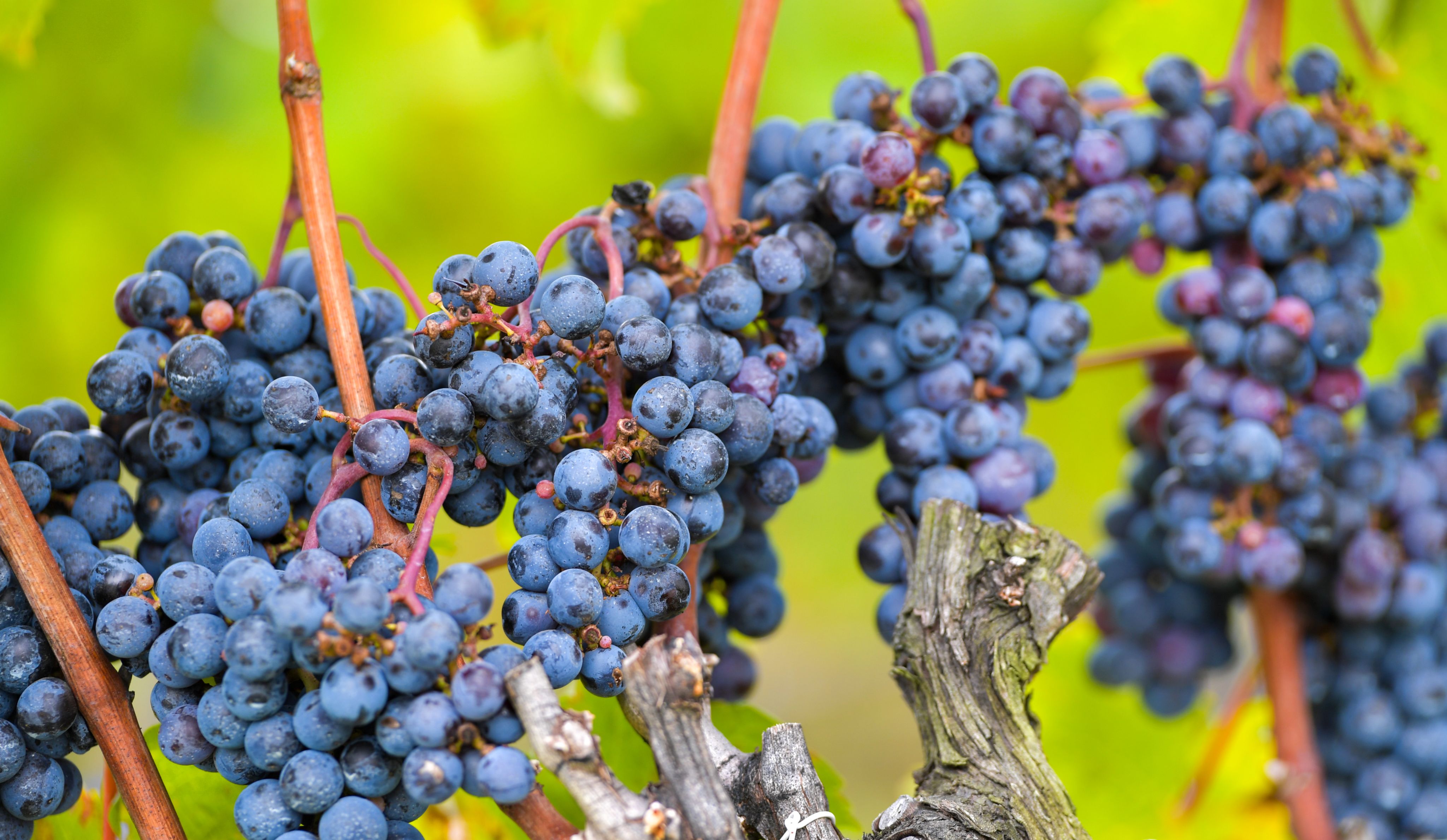

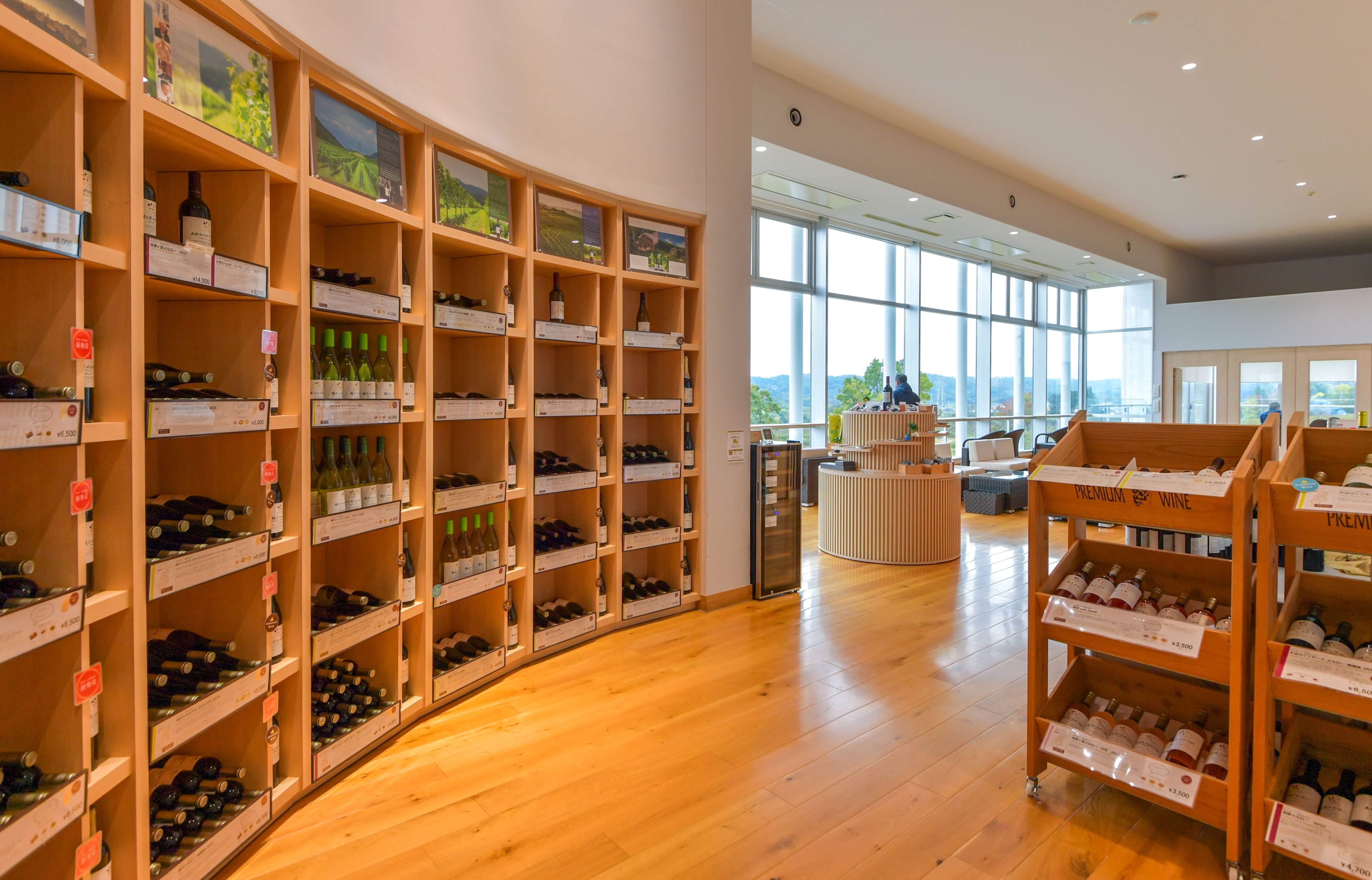
Tourism is key. Mariko Winery is designed for production and for show. In the main building, the tasting area and shop overlook the tank room and cellar on one side, vineyards on the other. Tours are available for visitors who want to dig deeper.
But Katsuno thinks that tourism in the region needs to be strengthened. While a bus service connects the winery to a train station in the area, access remains a challenge.
©️Chateau Mercian Mariko Winery
©️Chateau Mercian Mariko Winery
Across the river from the winery, the former post-town of Unnojuku, in Tomi, shows how travelers once passed through the valley.
Established in the early 17th century, Unnojuku was a stop on the Hokkoku Kaido, one of a network of highways connecting Edo (now Tokyo) with the Sea of Japan. Travelers on the route included worshippers on their way to Zenkoji temple.
Unnojuku’s attractive townhouses are now galleries, cafes, and restaurants serving Shinshu soba noodles, a Nagano specialty.
With Nagano one of the largest prefectures in Japan, travelers today can use shinkansen bullet trains to make much shorter time of this part of the valley. The journey between the cities of Nagano and Karuizawa takes around 30 minutes. There is a stop at Ueda, between the two popular destinations, but few people get off, according to Katsuno. “We need to work hard to make this area a destination in its own right,” he said.
At the southern end of the valley, the upper reaches of the Chikuma River flow through Komoro, near Karuizawa, and its former castle town built on low ground close to the river. What remains of the castle is now a park popular with photographers and visitors in cosplay.
Manns Wine Co. took to higher ground when it began cultivating grapes in Komoro, through contractors, in the early 1970s. Its Komoro Winey is among the oldest in the valley.
The winery has developed to welcome visitors, who can cross an avenue lined with zelkova trees between vineyards and the winery’s large Japanese garden.
On the fringes of the garden, the wine cellar is opened for winery tours and VIPs. A shop and tasting counter overlook the valley.


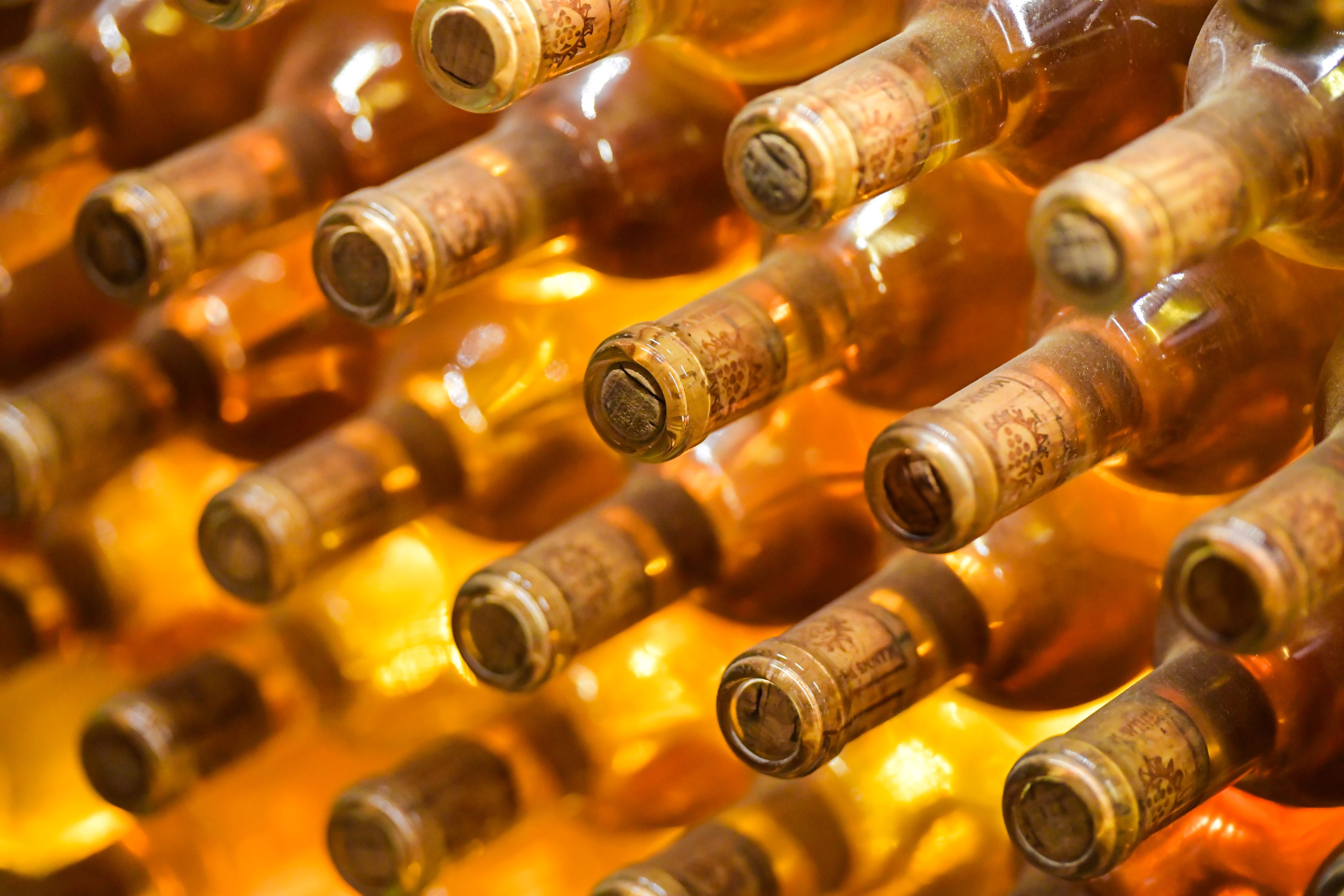

Soy sauce maker Kikkoman Corp. established Manns Wine in the early 1960s, expanding into wine to complement the increasingly international flavor of Japan’s dining tables.
The original focus at the Komoro Winery was on wine from Nagano’s ancient Ryugan grape -- also known as the Zenkoji grape after growing in the region around Nagano’s famous temple.
A 100-year-old Zenkoji vine, which inspired Manns Wine to pursue winemaking with Ryugan grapes, which it says were on the verge of extinction, now grows in the Japanese garden.
Although old by Chikumagawa Wine Valley standards, the half-century of winemaking at Komoro Winery is short. Teppei Nishihata, a winemaker at Komoro Winery, sees this as a positive. “This is just the beginning. There’s so much potential ahead,” he said.
Manns Wine explores this potential through its flagship Solaris series as it seeks to develop premium wines for the global stage. According to Komoro Winery, it has a rare asset in Nishihata, who is one of the few winemakers in Japan holding France’s national qualifications in both winemaking and wine-grape cultivation.
Among 32 varieties of grapes cultivated at the winery, the focus is on Chardonnay and Sauvignon Blanc for white wines, Cabernet Sauvignon and Merlot for reds.
Nishihata, 45, says there is still much to learn about the land around Komoro. The differences in elevation within the city alone, he says, present opportunities for winemakers that have since come to the area to develop their own interpretations of Komoro wine or that of the valley.
“Our winery alone does not make this a wine region. When we find a common thread among the wineries here, that's when we can define its character,” he said.
With around half of Nagano Prefecture's 90 wineries located in the Chikumagawa Wine Valley, winemakers realizing the region’s potential look set to have a significant impact on the identity of Nagano wine.

Other Spotlight Japan Stories
no joke for struggling Choshi railway
The unconventional approach of a struggling railway operator in Choshi, near Tokyo, to revive its fortunes is just about keeping the service on track.
Yamanashi winemakers put faith in Japanese grapes to make fine vintage
Faith in Japanese grapes and the local terroir to produce competitive wines is strong among winemakers in central Japan’s Yamanashi Prefecture, where even a local temple makes its own tipple.
Rising bear attacks prompt new shooting rules, but hunters dwindle
Japan's surge in bear attacks has forced the government to relax rules on "emergency shootings" in populated areas, amid concerns over whether municipalities can secure hunters skilled enough to respond without putting residents at risk.
Narita's holdouts fight for a future beneath the flight path
Resembling shark fins poking above the waterline, the tails of taxiing airplanes are just visible over the tall white fence that separates Kinone Pension from the runways of Narita airport.
The Company uses Google Analytics, an access analysis tool provided by Google. Google Analytics uses cookies to track use of the Service. (Client ID / IP address / Viewing page URL / Referrer / Device type / Operating system / Browser type / Language /Screen resolution) Users can prevent Google Analytics, as used by the Company, from tracking their use of the Service by downloading and installing the Google Analytics opt-out add-on provided by Google, and changing the add-on settings on their browser. (https://tools.google.com/dlpage/gaoptout) For more information about how Google handles collected data: Google Analytics Terms of Service (https://policies.google.com/technologies/cookies?hl=en#types-of-cookies) Google Privacy & Terms(https://policies.google.com/privacy)
© Kyodo News. All Rights Reserved. No reproduction or republication without written permission.

